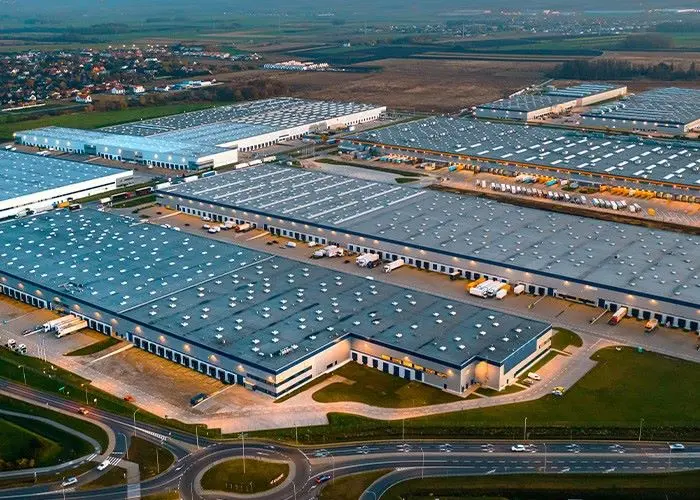- Insights & events
- Blog

Blog | March 13, 2025
Trends in warehousing: from machine learning to the internet of things
In today's rapidly changing supply chain landscape, businesses are expected to increase their efficiency while becoming more sustainable. Cutting-edge technologies such as artificial intelligence (AI) and advanced automation offer innovative solutions to meet these challenges. This article will take a look at some of the most influential trends in intralogistics.
Intelligent material supply with machine learning
Traditional methods for planning internal transportation often lead to inefficiencies. One good example of this: implementing rigid schedules for tugger trains frequently results in increased inventories, limited flexibility and an excessive number of shipments.
This is where machine learning (ML) offers great potential. Proven ML algorithms enable dynamic, demand-oriented planning that adapts in real time.
Several customer projects have shown that ML-based optimization enables impressive results. Businesses have been able to increase their transportation utilization by up to 20% and reduce resource requirements in order picking by 15%. In addition, the on-time delivery rate rose to over 99%. These efficiency gains also contribute to the environmental sustainability of logistics systems by avoiding unnecessary transportation.
Warehouse automation with autonomous mobile robots
Another trend is the automation of internal transportation in warehousing with the help of autonomous mobile robots (AMRs). They represent a significant advancement over previous warehouse automation technologies.
Compared to traditional automated guided vehicles (AGVs), AMRs offer significantly more flexibility. Thanks to advanced sensors and AI-supported navigation systems, they can be easily integrated into dynamic environments without extensive infrastructural changes. This enables automation in previously unthinkable places, including unstructured and complex environments such as dynamic handling areas or hard-to-reach building areas.
Although the initial investment in AMRs can be 50-100% higher than for AGVs, they provide cost savings in the long-term. Numerous customer projects show that the automation of complex internal transportation can reduce logistics costs by up to 10%. In addition, optimized routing and energy-efficient designs contribute to the environmental friendliness of the systems.
Process efficiency through the internet of things
The internet of things (IoT) has revolutionized data collection and real-time analysis in the supply chain. IoT has a wide range of applications in warehouse logistics. For instance, IoT solutions support intelligent inventory monitoring using sensor-supported shelves and real-time tracking via RFID and GPS. Another example is monitoring temperature-sensitive areas. These tools significantly increase process transparency and therefore also process efficiency.
The next step is digitally controlled logistics systems based on IoT-supported digital twins. These systems enable comprehensive simulation and control in real time. Fully digitized logistics systems can increase efficiency by 30-50% when compared to classic setups.
The path to the future of warehousing
The ongoing development of robotics and AI technologies is opening up new possibilities in warehouse logistics. The automation of complex and highly dynamic environments offers potential to improve both productivity and sustainability.
The future of warehousing is technology-driven, connected and sustainable. These innovations not only promise increased efficiency, but also pave the way for more sustainable and resilient supply chains. With these solutions, businesses can secure their competitive advantage in a constantly changing world.
Sound interesting? We look forward to hearing from you.
Contact usAuthors


Jan-Niklas Grafe
Principal
4flow consulting


Kim Küstner
Consultant
4flow consulting
